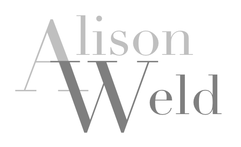|
Letter 7:
Dear Hans Hofmann |
Dear Hans Hofmann, I wanted to continue to tell my story of Stella Waitzkin: Perusing Stella's living room, I noticed a small white and black sign that read "These books are paintings.” I immediately thought to myself that having a sign in one's studio was a smart and easy way to impress your work's philosophy upon your guests. Should I too have a sign? My sign would mention soul and emotion transmission, traits that the art world has made me almost embarrassed to believe in so fervently as I do. It would be easier to support these principles by having a sign. Yet my poetic titles for my painting were the equivalent of Stella's signs. I titled each of my works metaphorically, naming the work much like naming a baby, giving an identity to each work. Hot Zone, Self Reliance, 100 Lives of Earth, Death's Breath, Loss of Faith on the Road to Madagascar were some of my signs. Stella was a painter who became an installation artist after having been a performance artist during the Vietnam War. Her sign was right. Each book was first a painting and was resolved on its own before it became a unit in a library wall. I read the shelves as color and texture, image and gesture, as if reading a sentence, moving from left to right. Stella's color was usually light in its value. Sometimes jewel-like, sometimes muddy. She transformed the style of gestural abstraction into evocative monuments to poignancy and emotion. I absorbed Stella's work very easily, identifying with it as something I loved and respected from my very first visit. I never had any doubts. She was a fierce expressionist while also being nostalgic and Victorian in her sensibility. Her works were feminine while also having an impersonal non-gendered grandeur. Her environment was monumental. As a thirty year old painter I was ecstatic to sit and talk to an older woman artist. During the course of our conversation I found out much to my delight that Stella had also studied at Alfred University. She asked me to remember to bring color transparencies of my work to our next appointment. I was working on a painting series inspired by my recent job in the Vertebrate Paleontology laboratory of the American Museum of Natural History. For three years I had assisted Dr. Eugene Gaffney, making molds and casts of a fossil turtle. My abstracted turtle imagery was expressionistic, textural and somewhat odd, reflecting Chicago's quirky sensibility as much as New York City. I learned a lot about Stella's aesthetic during the first appointment and knew that I would keep in touch while on my excursions into Manhattan to look for work for the Paul Robeson Gallery’s active exhibition program. The director of the gallery was also a figurative sculptor, Stuart White. As he also taught sculpture I was left with much of the curatorial work. I felt lucky to have an interesting job which put me in touch with significant and usually under known artists. And I liked Stuart very much. He was intelligent and silly at the same time and a good person to work for. After work I often visited his studio in his home and looked at what he was working on. His works were figurative and narrative, blending elements of Americana such as duck decoys or paintings reminiscent of 19th century landscape with surreal plaster life size nudes set in tableaus or diorama like settings. When I got back to the gallery the next day I told Stuart that Stella Waitzkin's work spoke with eloquence. We both wanted romance and spirituality to be alive in 1984. We were happy about this discovery of a serious under known artist. As Stuart's sculpture was also romantic and quirky itself, he supported my desire to show Stella's work. I told him that Stella's touch was ethereal and her color sense was lyrical. I was quietly swooning with excitement over meeting an older and accomplished artist and I thought one without any self-absorbed pretensions of grandeur. I thought that it was especially wonderful that Stella and I were both responding to the New York School, though I am a postmodernist accepting more than one school of art having begun my art practice during the time of aesthetic pluralism. I remember being excited that she had studied with you. I don't know why it has taken so many years to write. Yours sincerely, Alison Weld |
